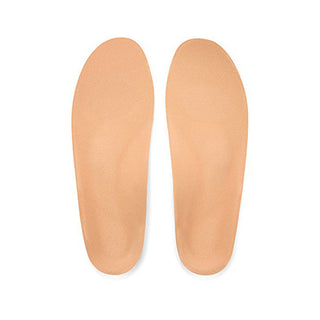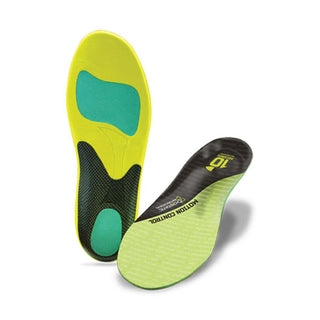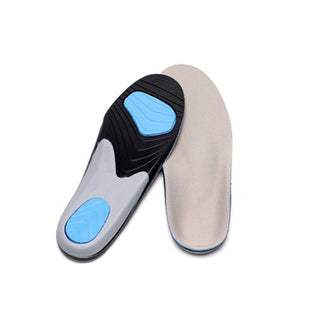Flat Feet/Low Arches: Causes and Treatment
Recommended for Flat Feet/Low Arches: Causes and Treatment
View allDid you know that every person is born with flat feet?
Arches develop as you age, but sometimes they don’t fully develop, or they collapse as time goes on. Flat feet/low arches are common and often painless – but not always. Due to the impact on the alignment (or rather, misalignment) in your legs, flat feet can cause ankle, calf, knee, leg, and back pain.
Read on to learn more about flat feet and how they can be treated.
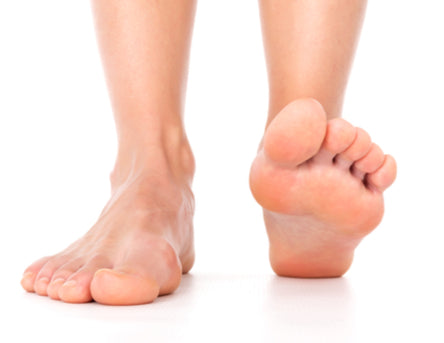
Insoles could have a drastic effect in helping to realign your structure and help you live pain free.
Browse our full collection of insoles for low arches.
What Are Flat Feet?
Flat feet go by many names. They can also be called fallen arches, pes planus, or low arches.
When a person has flat feet, the entire sole of their foot comes into complete or near-complete contact with the ground.
Again, we are all born with flat feet. Often, flat arches are a normal variation in foot type, and people without arches may or may not have problems. Those who do have painful feet from flat arches may experience symptoms such as pain in the heel or arch area or swelling along the inside of the ankle or inside the bottom of the foot. Some people may have ankle, knee, hip, leg, and back pain related to low arches because this condition can alter the alignment of your legs. Someone may also experience foot fatigue or stiffness in the feet due to flat arches.
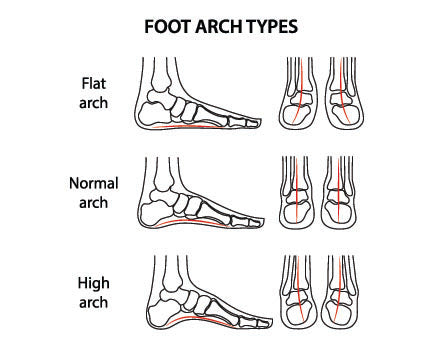
When a person has flat feet, the entire sole of their foot comes into complete or near-complete contact with the ground. Flat arches are a normal variation in foot type, and people without arches may or may not have problems.
What Causes Flat Feet?
There are a few different causes for flat arches.
- Arches never developed
- Injury
- Tarsal coalition
Congenital Flatfoot (Arches Did Not Develop)
This condition can be a congenital flatfoot, which occurs when arches do not develop during childhood. It can also be caused by a postural deformity in which the arch of the foot collapses over time. This happens when years of wear and tear weaken the tendon that runs along the inside of your ankle and helps support your arch.
Injury
At times, flat arches develop after an injury. The posterior tibial tendon is the main support structure of the arch of our feet. The tendon can become inflamed (tendinitis) or overused; once the tendon is damaged, Posterior Tibial Tendon Dysfunction (PTTD) can occur, and the arch shape of the foot may flatten. Flatfooted runners are prone to overuse injuries and should be sure to wear proper support in order to prevent injury.
Tarsal Coalition
In some cases, people experience tarsal coalition, a condition in which the bones of the foot fuse together in an unusual way, resulting in stiff and flat feet. This is most commonly diagnosed during childhood.
Flat Feet vs Flexible Feet
Many young children have flat feet, but when a child rises to his or her toes, a slight arch appears. This is called flexible flatfoot. For the most part, a child’s arches will develop as he or she grows older.
How to Know If You Have Flat Feet
Unsure as to whether your feet are flat?
Here is a simple test to find out: With your feet wet, stand on a surface that will reveal your footprint. A good option for this is a concrete floor or walkway. Next, step back and look at your wet footprints. If there is a print of the entire bottom of your foot, including the center, it is likely that you have flat feet.
How to Treat Flat Feet
There are various ways to treat flat feet. One of the most important treatments is a structurally supportive shoe. If your flat feet are causing you pain, then adding over-the-counter orthotics to good shoes may help a lot. Or your doctor might suggest custom-designed arch supports, which are molded to the contours of your feet. Arch supports won’t cure flat feet, but they often reduce symptoms.
If you decide to purchase insoles to provide support for flat feet, here are the best ones in our shop:
Stretching exercises or physical therapy can also help flatfooted patients, but unless it is combined with proper footwear it may not be effective long term.
What to Look For When Buying Insoles For Flat Feet
When selecting insoles for flat feet, you'll want features that provide proper support and help create an artificial arch. Here are the key elements to look for:
- Moderate to high arch support: This helps create the arch that your foot naturally lacks, though you'll want to start with moderate support and gradually work up to higher support to avoid discomfort.
- Even pressure distribution: Look for insoles that spread your weight across the entire foot rather than concentrating it in specific areas. This helps reduce strain on any one part of the foot.
- Cushioning: Look for insoles that have structure but still have good cushioning properties, especially in the heel and ball of the foot.
- Rigid or semi-rigid support: The insole should be firm enough to maintain its shape and provide structure. Some people with flat feet prefer insoles with some flexibility (semi-rigid) to allow natural foot movement.


